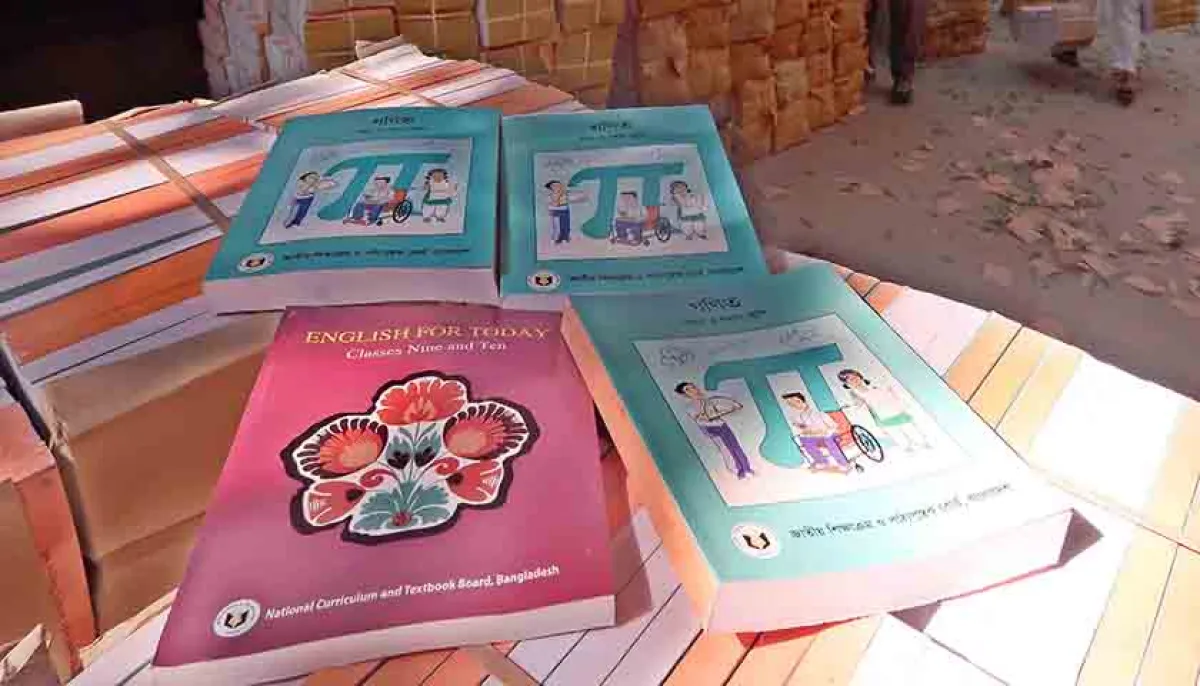
The National Curriculum and Textbook Board (NCTB) has published fifth grade textbooks with wrong names of July uprising martyrs.
The Bangla textbook reads that along with others, one Nahiyan was killed during the protests. But NCTB officials said actually it was meant to be Nafisa Hossain.
The same book says Abu Sayed, a student leader in Rangpur, stood with his arms outstretched in defiance against police brutality. The police shot him dead at close range. As a result, the movement spread like wildfire, drawing people from all corners of the country onto the streets.
A massive uprising followed. In Dhaka's Uttara, Mir Mahfuzur Rahman Mugdho, a student, was killed while giving out water bottles to protesters.
"Countless lives were lost, including [Golam] Nafiz, Nahiyan and Anas. Even children in their mothers' arms, children playing with their fathers, rickshaw pullers, labourers, farmers, hawkers, office workers, mothers and pedestrians were not spared," reads the relevant section.
When this correspondent sought details of the three named—Nafiz, Nahiyan and Anas—sources at the textbook board said that they had decided to include a woman among the martyrs and had decided on Nafisa, who was an HSC candidate of Shahajuddin Sarker Model Higher Secondary School in Tongi. She was shot dead by law enforcers during a protest in Savar.
"We did not decide to include anyone named Nahiyan," the source said.
It could not be independently verified whether anyone named Nahiyan had been martyred during the July uprising at all.
The source said that all the fifth-grade textbooks are already at the printer's.
Contacted, NCTB Chairman Professor AKM Reazul Hassan admitted that they had also spotted the mistake.
"We will look into the matter," he said adding, "We will correct it in the pdf versions that will be sent to the schools today. We will also send a correction to the schools soon."
NCTB officials said that Golam Nafiz, a 16-year-old fresher at Noubahini College, was the one whose photo had featured in several newspapers during the July uprising. That photo of a bloodied Nafiz—shot by the police lying motionless in the footwell of a rickshaw while his head, with the Red and Green tied like a bandana, fell back and lolled in the air—had become one of the iconic images of the uprising alongside those of Sayed and Mugdho.
Anas, who was a 10th grader, was killed on August 5, while protesting near Dhaka's Chankharpul. Before going to the protest, he had left a letter for his mother saying, "Ma, I am going to the protest. I couldn't sit at home anymore. It's better to die on the streets like a hero than stay at home like a selfish person, fearing death."
That specific chapter where Nafisa's name has been mistakenly printed as Nahiyan discusses people who have made supreme sacrifices for the cause of the country and includes the names of revolutionaries like Titu Mir, who resisted the oppression of the local zamindars and the British indigo planters during colonial era and Pritilata Waddedar, another revolutionary from the British era.
It includes Amanullah Mohammad Asaduzzaman and Matiur Rahman who were both shot by police during the 1969 mass upsurge and Sergeant Zahurul Haque, an accused of Agartala conspiracy case, killed by Pakistan military in 1969.
The same chapter also includes sections on Noor Hossain, Dr Shamsul Alam Khan Milon and Nazir Uddin Zehad, who made been killed during protests against military dictator Hussein Muhammad Ershad.
The chapter is embellished with sketches of Sayed, Mughdo, Titu Mir, Pritilata, Asad, Matiur, Noor Hossain, Dr Milon and Zehad.
Source: the daily star
